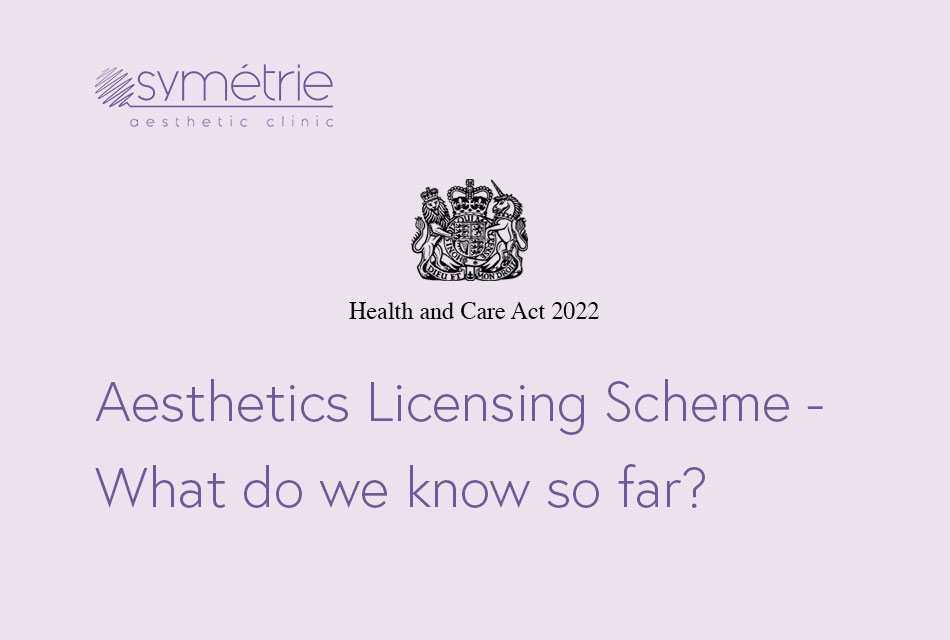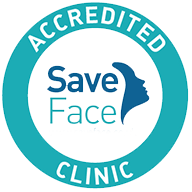
If you’ve already read our last blog post, you’ll know that the UK Government are planning to introduce a licensing scheme for cosmetic procedures in England. Something that all here at Symetrie completely support!
However like all of these type of things that have to go through Government, nothing is particularly fast and the scheme is still going through consultation stages. Currently they are at a stage people and businesses are being invited to share their views on how to make non-surgical cosmetic procedures – including Anti-wrinkle injections, laser hair removal and dermal fillers – safer. This includes age limits and restrictions for high-risk procedures, including those involving injecting fillers into intimate parts of the body – including the breasts and buttocks.
In the last post we went into a bit about the RAG ratings for procedures and how, where and who should be allowed to carry out these medical non-surgical aesthetic procedures.
Here is some more information about what is being proposed:
Treatments that should be included
The scheme will be focused on addressing ‘cosmetic procedures’, which is defined as a procedure, other than a surgical or dental procedure, that is or may be carried out for cosmetic purposes; and the reference to a procedure includes:
(a) the injection of a substance
(b) the application of a substance that is capable of penetrating into or through the epidermis
(c) the insertion of needles into the skin
(d) the placing of threads under the skin
(e) the application of light, electricity, cold or heat
Who will be able to perform each procedure?
The list of procedures have been divided into subcategories based on risk.
The categories are as follows:
Green – procedures with the lowest risk of complications. All practitioners are eligible to perform licensed procedures where they meet agreed standards. Treatments include:
- microneedling
- mesotherapy
- intense pulsed light (IPL) and light emitting diode (LED) therapies
- chemical peels that involve destruction only into viable epidermis (the outermost layer of the skin)
- ‘no-needle’ fillers including pneumatic devices that use intense pressure to pass substances through the epidermis
- micropigmentation (semi-permanent make up), including microblading and nanoblading
- non-ablative laser hair removal
- photo rejuvenation (the use of a laser to treat skin conditions including wrinkles, acne scarring, sun damage)
Amber: procedures with medium risk of complications. Non-healthcare professionals must be licensed and have relevant oversight by a named regulated healthcare professional (who has gained an accredited qualification to prescribe, administer and supervise aesthetic procedures). Qualified and regulated healthcare professionals are eligible to perform these procedures without oversight where they meet agreed standards.
Treatments in this category include:
- botulinum toxin injections
- semi-permanent dermal fillers injected into the face only
- biorevitalization injections and/or any injection of hyaluronic acid
- vitamin and mineral injection procedures
- platelet rich plasma (PRP) therapy for cosmetic purposes and Biofiller
- injection microsclerotherapy (spider vein treatment)
- weight loss injections
- carboxytherapy and/or the infusion of gases under the skin
- cellulite subcision
- injection lipolysis with a POM
- cryolipolysis
- high intensity focused ultrasound (HIFU), including intimate use
- radiofrequency treatments
- plasma ablation or plasma fibroblast
- non-ablative lasers (excluding photo rejuvenation and laser hair removal)
- medium depth peels that involve full thickness destruction of entire epidermis into upper dermis (the inner layer of the 2 main layers of the skin)
- POM treatments applied topically for cosmetic purposes, such as prescription strength vitamin A and hydroquinone for the treatment of pigmentation problems or for skin whitening
- electrocautery
- the combination of 2 or more technologies to create a hybrid device. For example, the combination of radiofrequency and microneedling to treat lines, wrinkles, sagging skin, acne scars and stretch marks
- cryotherapy and/or any cryocautery procedure that freezes the skin in order to remove skin lesions such as skin tags, age spots and warts
Red: procedures with the highest risk of complications. It is proposed that certain high-risk procedures will be restricted to specified regulated healthcare professionals and be regulated by the CQC.
Such procedures would not be included within the local authority licensing scheme.
These procedures include:
- all thread lifting procedures, including PDO thread and cog lifts
- hair restoration surgery
- procedures aimed at augmenting any part of the body, in particular the breast, buttocks and genitals, typically using autologous fat or dermal fillers
- dermal micro-coring
- hay fever injections for reducing redness or blotches on the skin
- the combination of ultrasound and large bore cannula for the purposes of liposuction
- deeper chemical peels such as phenol peels
- lasers which target the deeper layers of the dermis. For example, CO2 lasers, where used for extensive fully ablative resurfacing
- the provision of any green or amber procedure where the circumstances of the provision meet the criteria for the procedure to be classed as the CQC regulated activity of treatment of disease, disorder or injury (TDDI)
- all intravenous injectables and infusions
Minimum age of clients
The Botulinum Toxin and Cosmetic Fillers (Children) Act 2021 made it an offence for a person to administer botulinum toxin, or a filler by way of injection for a cosmetic purpose, to a person under 18 in England. The act also made it an offence to make arrangements to undertake, or arrange for another person to undertake, these procedures on a person under 18 in England.
It is being proposed that the licensing scheme requirements or conditions will prohibit practitioners from performing any procedures included within the scheme on people under the age of 18 unless the procedure has been approved for use on a person under 18 by a GMC registered doctor and is carried out by a specified healthcare professional.

